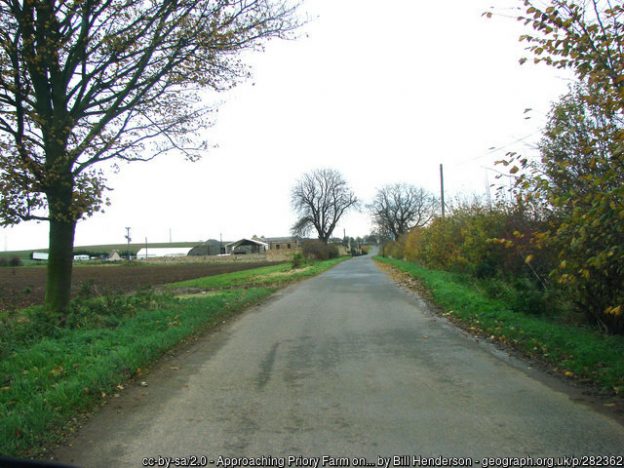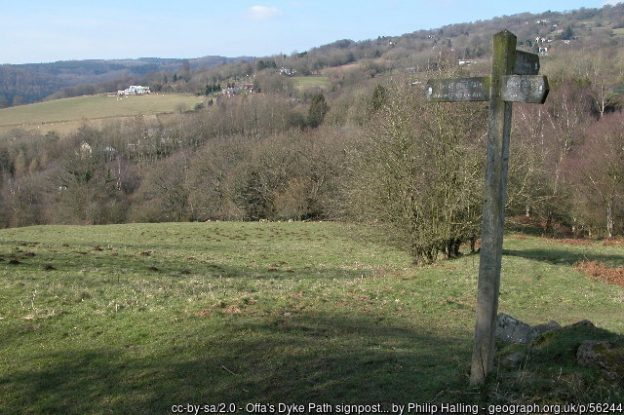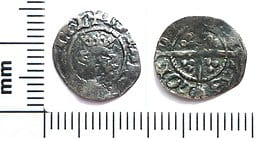My current obsession is Wright v. Holgate, a case from 1850 (I know – ludicrously up to date …!). It is going to form part of a paper I’m giving at the SLS conference in Durham at the beginning of September. In fact, I have got so into it that I might use it as a sort of framing device for the whole thing.[1] The paper is about fairly doctrinal legal things (though I’d like to think that there are some deeper insights too) but there is certainly more to the case than I will have time to deal with there, so I think it deserves a bit of a blogging as well.
The case, which appears in contemporary newspaper reports and a law report,[2] starts with a will, that of a cattle dealer from Halifax (West Yorks) a certain Jonas Holgate. Let’s call him JH 1, since, as you might guess, what with naming of sons being a bit conservative at this point, there is also another Jonas Holgate who is relevant here, the less than lovely JH 2. Anyway, JH 1 owned some property in the Halifax area. There were several Holgate offspring, including JH 2 and a daughter, Susannah. JH 1’s will left shares of his property to each of the children, and after them, to their lawful offspring (i.e. legitimate children). By 1850, both JH 1 and Susannah were dead, and there were disputes about the property. The whole thing was in Chancery, under the name Patchett v Holgate, and there is more to it than this question, but one thing which did come up for argument was whether Susannah had lawful issue. A Master in Chancery reported in the affirmative: there was a son, Tom Wright, who was born to Susannah whilst she was married to one Thomas Wright (butcher and cattle dealer). So, young Tom would succeed, we might think. Easy. But no.
It was objected that the child was not the lawful issue of Susannah and Thomas, but was in fact a bastard (specifically an ‘adulterine bastard’): another man was the child’s biological father. Bizarre and cruel as it now seems, this question of legitimacy/bastardy was a crucial one at the time: if Tom was legitimate, he would get the property, but if he was a bastard, he would get nothing. It would be good for the other descendants of JH 1 – JH 2 amongst them – if he was found to be a bastard, since that would make their shares in the old man’s property bigger.
Why did the question of illegitimacy arise here, and how was it solved? Well, it is worth rewinding a few years and filling in some key details of the less-than-happy family life of the Holgate-Wright dynasty. Susannah and Thomas had married in 1836. In 1839, however, they had separated ‘by mutual consent’. Tom was born on 7th March 1847. At this point, Susannah and Thomas were still legally married: their separation appears to have been private or informal. There were allegations that Susannah had been having sex (or ‘connection’ as they prefer to say) with people other than Thomas during this separation. As the lawyers in the case make clear, however, the fact that other men might be the biological father of a child was not enough for the child to be held a ‘bastard’ at law – if there was some prospect that the husband was in fact the father – i.e., if he had had ‘access’ to Susannah at the relevant time – then the law was supposed to make it hard to ‘bastardise’ the child, deploying a presumption of legitimacy.
Thomas gave an affidavit, swearing that he had in fact had ‘connection’ with Susannah on a number of occasions since 1839. Both had remained within the same area, sometimes both in Halifax, and at other times Thomas went as far as Rochdale (Boobdale as one of the newspaper machine-transcribed accounts has it – foxed by a smudge along the bottom of the row – and I know I shouldn’t chuckle at breast-related slips, but, clearly, still got some growing up to do …) but actually that is not so very far from Halifax, and his cattle-focused work meant that he had to come to the cattle market at Halifax every so often. He stated that, on these occasions, he and Susannah had indulged in bouts of outdoor connecting. This did not pass the lawyers without objection – one apparently finding Thomas’s claim that he had ‘had intercourse with Susannah a number of times, in open air, within half a mile of Halifax’ ‘utterly incredible’.[3] There was some wrangling over what sort of evidence could be used to get to the bottom of paternity disputes like this. I will get into that a bit more in the SLS paper, but for now, let’s just say that it was decided to send the dispute about (il)legitimacy over to a common law court for determination, so off it went to Liverpool, to a hearing before Cresswell J (the marvellously named Sir Cresswell Cresswell) and a jury. It now goes under the name of Wright v. Holgate (or Holdgate), or in the English Reports, as Tom Wright (an infant) v. Jonas Holdgate and Others.
After the disputes about whether it was acceptable to hear Thomas Wright’s affidavit about bouts of spontaneous al fresco connecting with Susannah, one might have thought that care would be taken to ensure that only unimpeachably fair and relevant evidence was allowed to reach the jury’s ears. Not at all. There was a great deal of gossip about the deceased Susannah, who, clearly, was not able to defend her own reputation or her son’s interests. She was no better than she ought to be, and violent with it. It is hard to see how violence could be relevant to the issue, as opposed to simply being a bit of additional mud-slinging. More prejudicial than probative, anyone? Probably not surprisingly, a jury of Victorian men who passed a cetain property qualification, decided to withdraw from her, from Tom and from Thomas the benefit of the doubt. A bastard Tom was found, and that was the end of his participation in the Chancery suit.
There is certainly much here which seems deeply questionable from a modern, liberal, perspective, in any case deploying the concept of ‘bastardy’. I think that there are also relevant criticisms of this particular case within its own time and terms – thus, I think that the interpretation of rules of evidential exclusion were inconsistent, and the summary of the law on bastardy prior to 1850 certainly included inaccuracies. More on all of that in the SLS paper.
The thing I want to finish on here is a little reflection about the role of Thomas Wright, and the fate of Tom Wright. As noted, following the decision in Liverpool, Tom Wright disappeared from the property case. He was a bastard, as far as the law was concerned. The case was focused on his status with regard to his mother’s family, but the finding also implied, as a matter of logic, that he was not the legitimate child of Thomas Wright either. Thomas would have been entirely within his rights to leave the child, and his maintenance to others, such as the local workhouse, or one of Susannah’s alleged ‘paramours’. Apparently he did not do this, however. I checked census returns for 1851 and 1861 and turned up something which struck me as a bit heart-warming. ‘Thomas Wright’ is not, of course, the rarest of names, but when I found a pair of Thomas Wrights living in Rochdale, with a man named Wilkinson (the same surname as of one of our Thomas Wright’s employers, in Rochdale), with young Tom having the right place and year of birth, and Thomas senior and John Wilkinson described as ‘butchers’, I think I can be cautiously optimistic that I have found a less-than-miserable ending for our pair. Thomas the elder has gone by 1861, but 14 year old Tom is now a ‘pupil teacher’, living with John Wilkinson and others, which does seem to indicate a degree of fortune greater than one might have imagined. Thomas Wright comes out of the story rather well, I think. He swooped in after Susannah’s death, when JH 2 had put Tom into the local workhouse, had paid for his care, and clearly had taken him off to try and make a life together in Rochdale. I suppose that, up to 1850, we might have interpreted this as an attempt to keep control of a potential cash-cow (sorry) – as Thomas did involve himself in the litigation surrounding JH 1’s property. After the finding of bastardy, however, any such ungenerous interpretation has to be abandoned. I think it’s hats off to Thomas Wright. Perhaps he was ‘in a low condition of life’, as one newspaper sneered,[4] but he comes across as rather less mean-spirited than others in the tale, and, in particular, the charmless uncle of young Tom, Jonas Holgate 2.
GS
1st August, 2021.
[1] It is a bit of a gift that the case has a heavily bovine context, since there is a frequently-trotted-out proverb about legitimacy and marriage in medieval and later sources, ‘Whoso bulleth my cow, the calf is mine’ – grim but memorable, isn’t it? Will be working with that, though have rejected a more elaborate metaphorical structure running that proverb together with another common tag in adulterine bastardy, relating to the husband’s presence ‘within the four seas’. May have looked up ‘sea cows’ at one point, and toyed with the idea of finishing with a picture of a Steller’s sea cow (extinct), but luckily realised that that was too pretentious even for me.
[2] Newpapers, see, e.g., Times 20th July, p. 7 and 20th August 1850, p. 7, Manchester Guardian 21st August 1850, p.6. Halifax Guardian 24th August 1850, p. 3, 27 July 1850, p. 7; Globe 20th August 1850, p. 4; Evening Mail 22nd July 1850, p. 3. Report: ER 175 503; 3 Car. & K 158. (There are also potentially relevant papers in the National Archives: TNA C 14/847/H142, but I am still not able to get at those).
[3] Evening Mail 22nd July p. 3.
[4] Northern Star and Leeds General Advertiser, 24th August 1850 p. 8.
Photo by Quaritsch Photography on Unsplash









